Michele Celebrano
Politecnico di Milano | Milan, Italy
Politecnico di Milano | Milan, Italy
Nonlinear Interferometry with Metasurfaces: Towards Light Routing and Sensing

Metasurfaces have emerged as versatile, ultrathin platforms for light manipulation. Their rapidly evolving functionalities include precise control over light-wavefronts and the ability to perform light-by-light manipulation. Nonlinear optical processes are key mechanisms to realize light modulation by light. Leveraging the interference between degenerate nonlinear optical processes – specifically third-harmonic and sum-frequen- cy generation (THG and SFG) – excited by dual beam illumination at ω and 2ω, we demonstrated all-optical routing of telecom photons upconverted to the visible range by an all-dielectric metasurface [1]. Light routing with attosecond control is enabled
by the nonlinear parity conversion inherent to the SFG process, which converts two photons into one [2]. Expanding upon this paradigm, whereby the interference can
be controlled with high speed and accuracy by the relative phase between the pump beams, we envision applications to optical sensing. Indeed, sensitivity can be boosted by implementing a homodyne amplification scheme, where an upconverted signal at 2ω interferes with a reference beam of identical wavelength, effectively mitigating the low conversion efficiency of third order processes in these nonlinear metasurfaces.
In this regard, we recently realized a plasmonic metagrating [3] that, coupled to this concept, may allow enhanced nonlinear optical sensing. We could also leverage the common mode rejection naturally occurring among the diffraction orders to suppress intensity fluctuations. The all-optical routing demonstrated is not limited to intensity, but it also enables to modulate the polarization of the nonlinear light directed to the different diffraction orders of the metasurface. Notably, when circular polarization is produced in one diffraction spot, the opposite circular polarization is generated in the spot symmetrically positioned across the optical axis. This feature can be particularly appealing for chiral sensing applications,
[1] A. Di Francescantonio, A. Zilli, D. Rocco, L. Coudrat, F. Conti, P. Biagioni, L. Duò, A. Lemaître, C. De Angelis, G. Leo, M. Finazzi, and M. Celebrano, Nat. Nanotechnol. 19, 298 (2024).
[2] A. Zilli, D. Rocco, M. Finazzi, A. Di Francescantonio, L. Duò, C. Gigli, G. Marino, G. Leo, C. De Angelis,
M. Celebrano, ACS Photonics 8, 1175 (2021)
[3] A. Verneuil, A. Di Francescantonio, A. Zilli, J. Proust, J. Béal, D. Petti, M. Finazzi, M. Celebrano, A.-L. Baudrion, Nanophotonics (2024). https://doi.org/10.1515/nanoph-2023-0842
